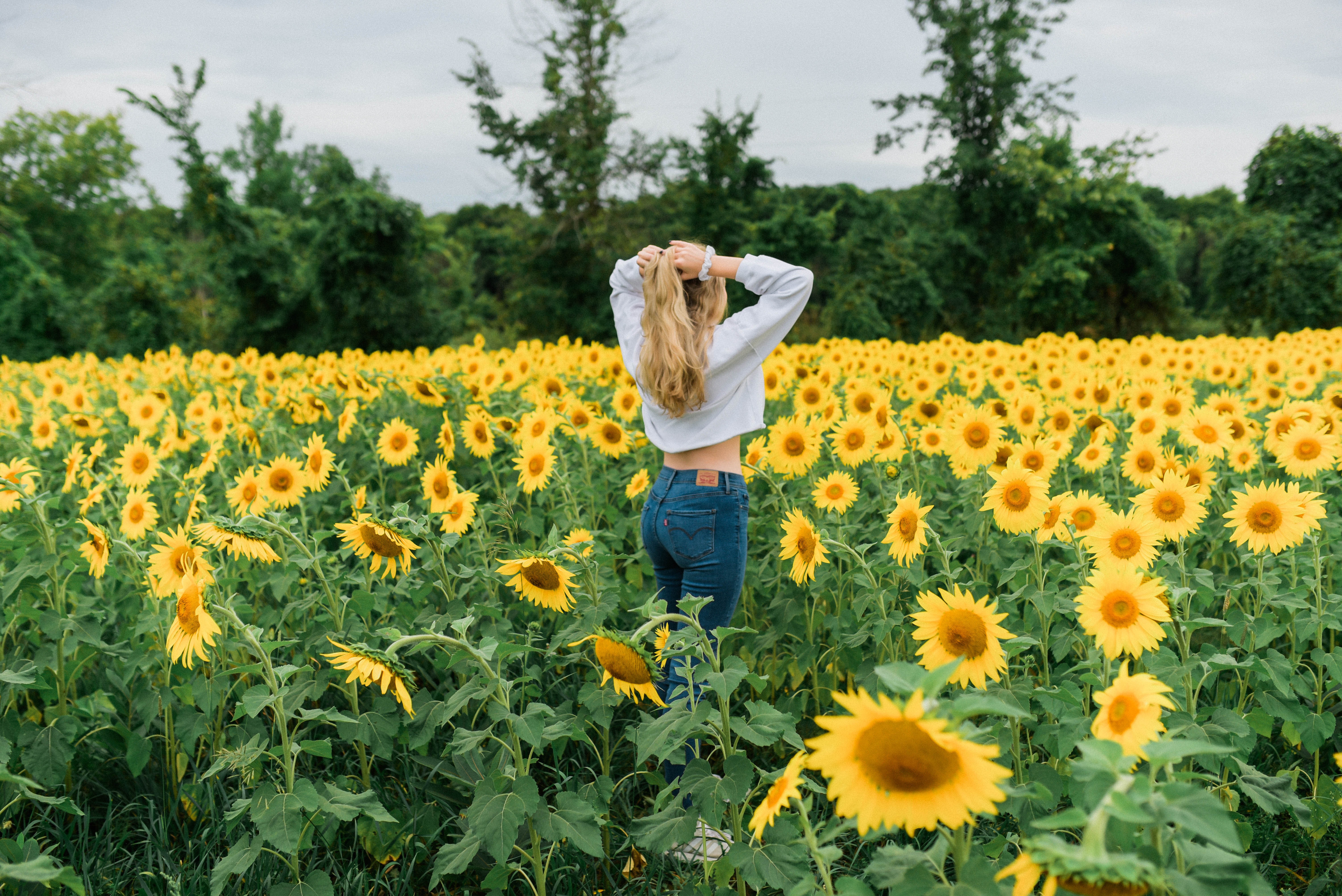Next time you’re out in the garden, admire the beauty of the flowers, trees and grass, by reaching out and touching it. Human touch is as important to humans as it is for nature. There are many health benefits of human touch, not only is it calming and soothing but studies have shown that it can reduce your blood pressure, release the love hormone ‘oxytocin’ and bring down anxiety and stress. Touch is healing and it activates your vagus nerve which controls the heart, lungs and digestive tract, our parasympathetic nervous system.
Nature also desires connection to change, grow and get essential nutrients. For example when a sunflower is in its growth stage, during the day it deliberately turns and faces the sun, this is called ‘heliotropism’ and is the habit of many different plants. When sunflowers stop blooming they generally turn to face east. This changes the cells and genes of the plant, and is sometimes known as phototropism, when a plant responds to light. Connection, also occurs when they grow, gaining nutrients from sunlight, water and minerals from the soil. Plants then provide us with natural medicine and feed birds, insects and animals. When we think about nature, it gives us the feeling that ‘we are all connected’, and that is because, we ourselves, are nature. Its fascinating to think that plants crave touch just as we do.
There is scientific evidence to suggest that just as we feel when people are touching us, so do plants. They feel sensations with things like, the rain, a caterpillar crawling across them and the wind blowing. People have also reported that plants grow better when hearing music or voices saying positive things to them. They call a plants reaction to touch, thigmonasty and suggest that it is one of a plants natural defences and protect them from harm.
In Australian Indigenous cultures they see themselves as part of nature, they have a deep relationship where there is a special spiritual, physical and social connection. They don’t view themselves as seperate from nature, but rather, an essential part of it. An elder, Bob Randall, explains that “When you’re alive, you connect to everything else that is alive”, and children are taught from a very young age to embrace nature and the land. Its easy to forget that most adults had more time in nature than their children or grandchildren, nature is important for child development and helps them experience fresh air, creativity and discovery. Indigenous cultures have used art in correlation with nature for thousands of years, and it is another way children can get in touch with nature by drawing, painting and using natural items they’ve picked up from outside.
Studies have shown that when we view nature, even in pictures, our bodies have a positive emotional response. As humans we have an innate desire for connection but our lives can be so busy and hectic, that its easy to forget about nature as a way of reducing stress. This is because we spend much of our lives indoors. Our culture has changed from getting everything it needs in the natural environment, food, water, shelter, nutrients and medicine. To getting our needs met indoors. There are a lot of people out there who leave from home in the morning, to drive in the car and then off to work, maybe a coffee shop for lunch or a meeting and then off to the gym and back home again. When we are not getting time outdoors, we are missing out on a connection that we were essentially born to thrive in.
By taking a break and reconnecting with nature, we are allowing ourselves to ground, find peace, invigorate our senses and gain a clear mind. Like an old oak tree, we learn that we need to plant our feet firmly on the ground, our lives need stability and order for growth but they also need flexibility to be able to relax and accept change.


